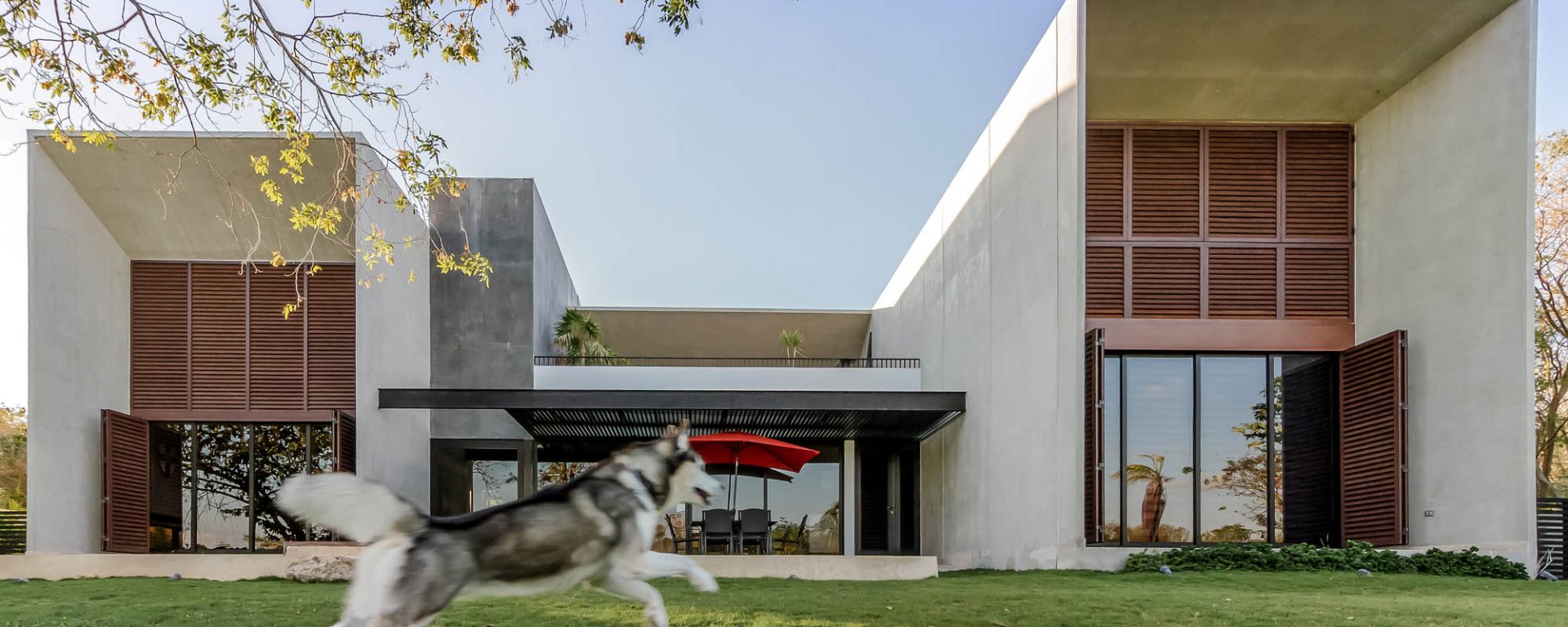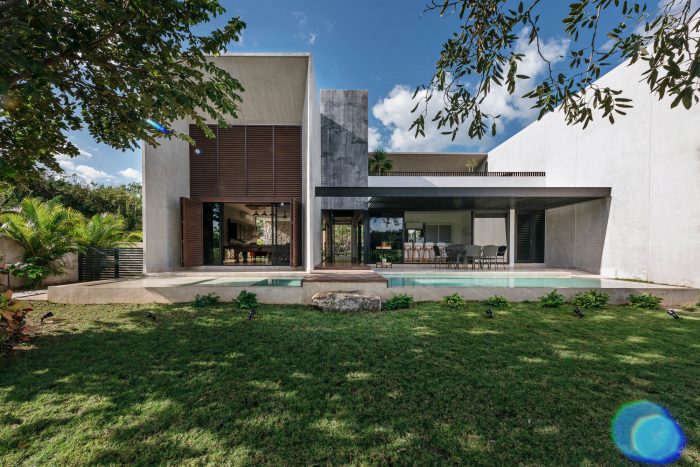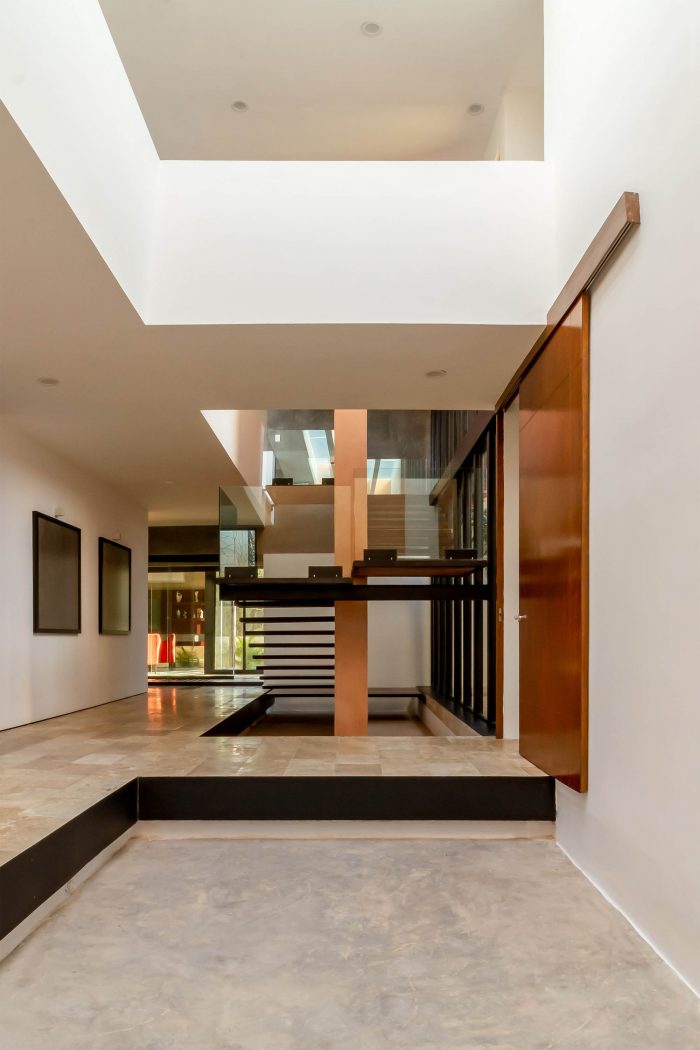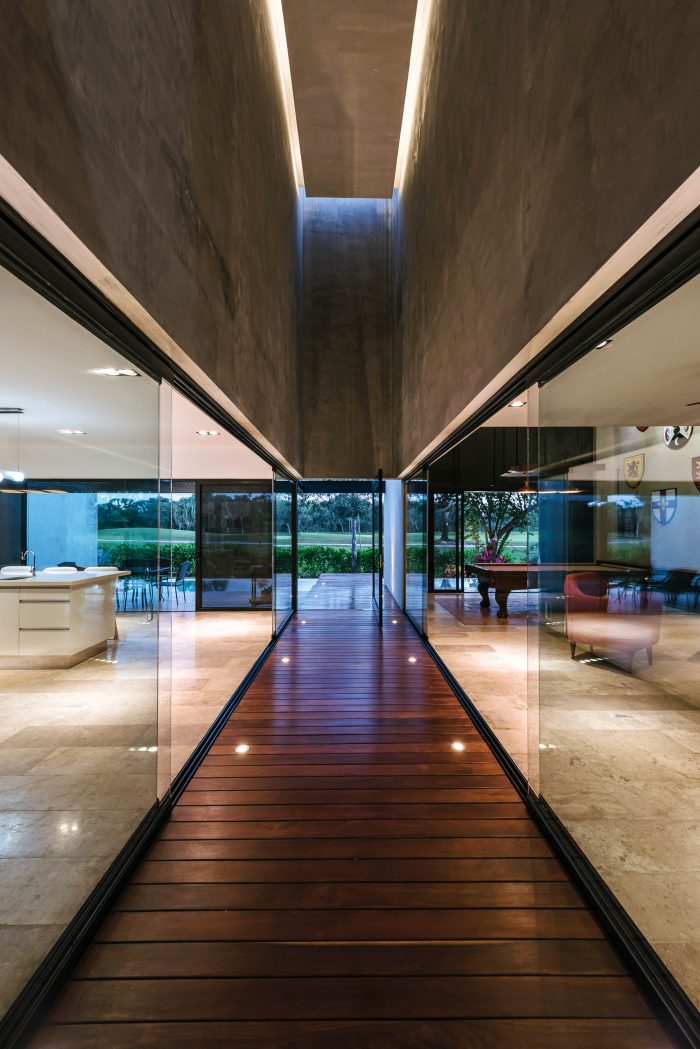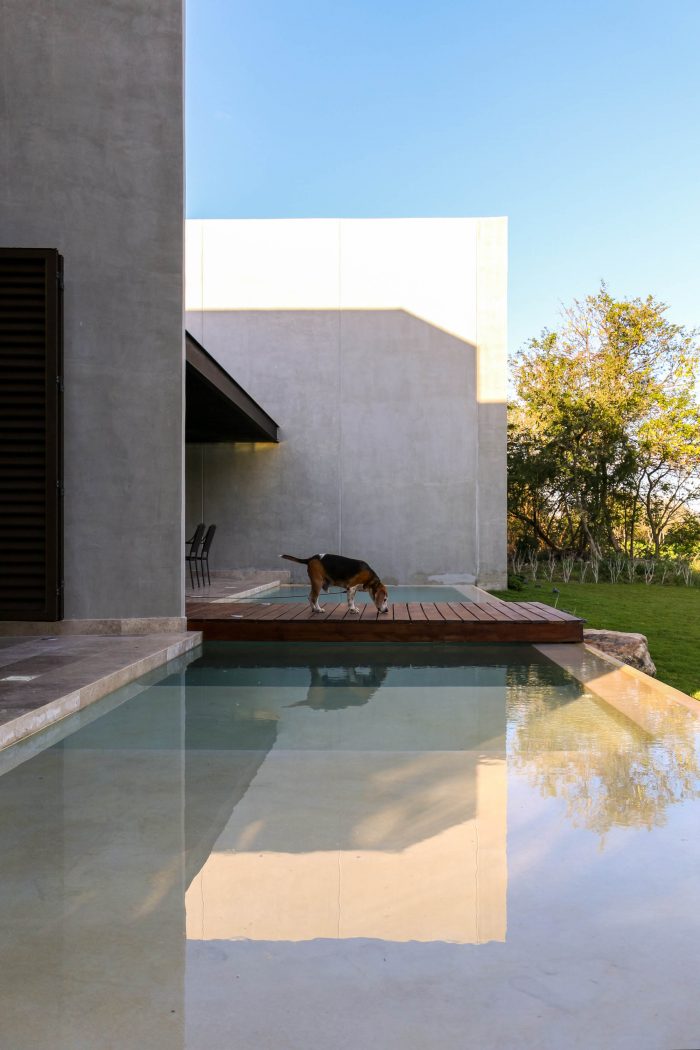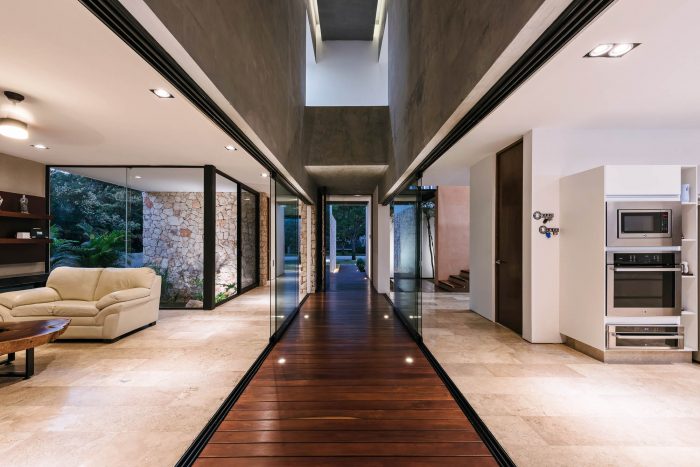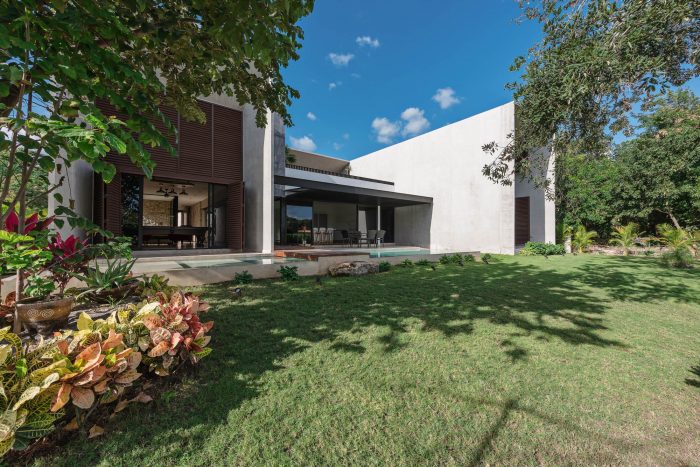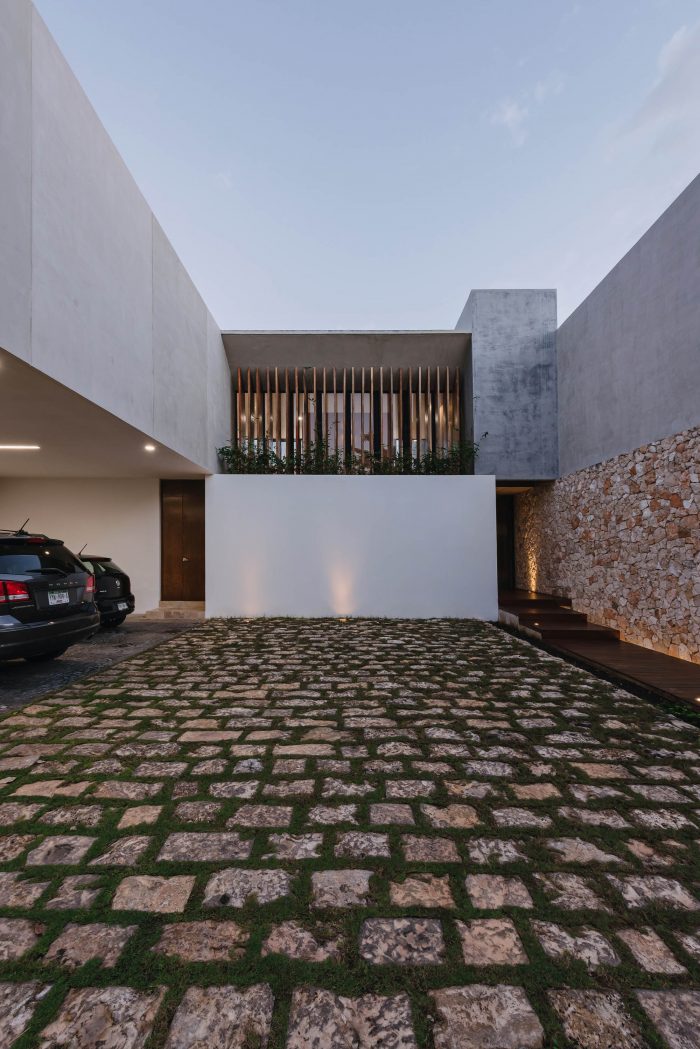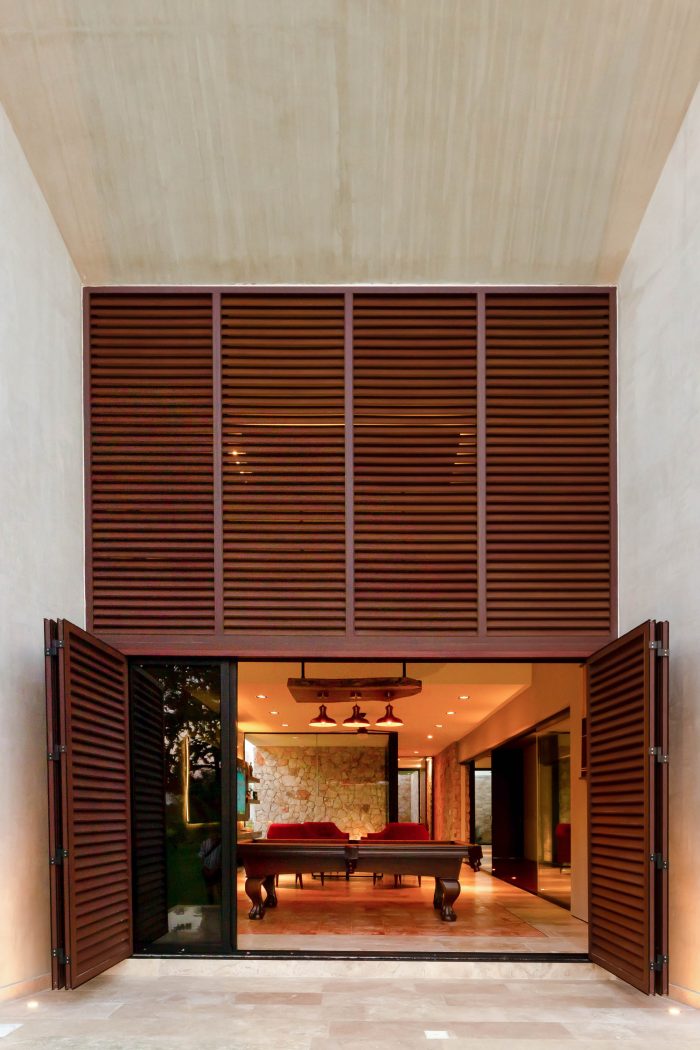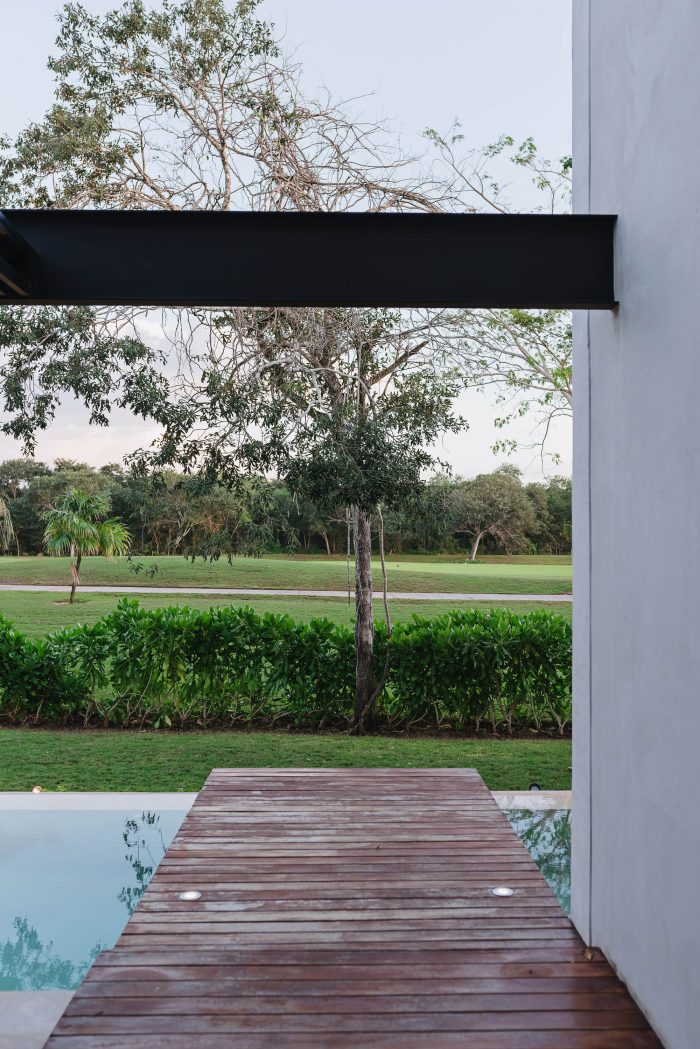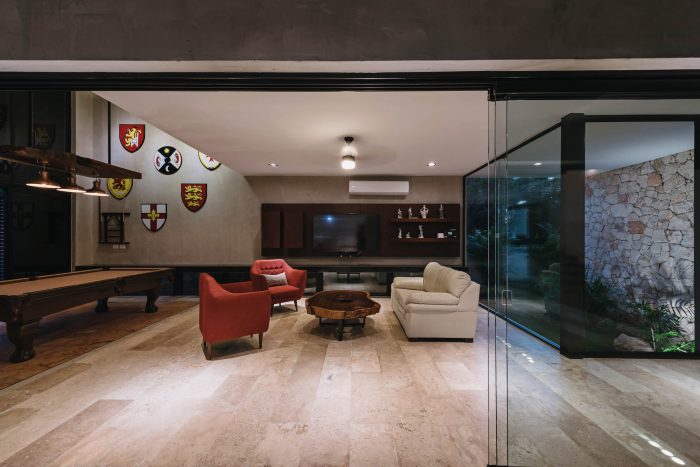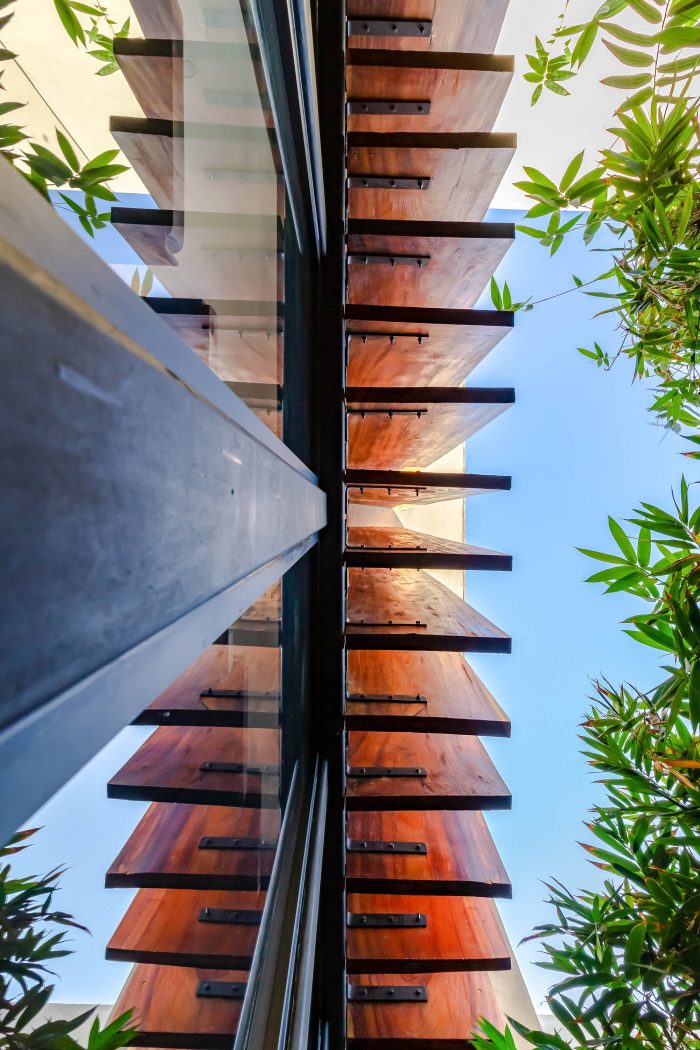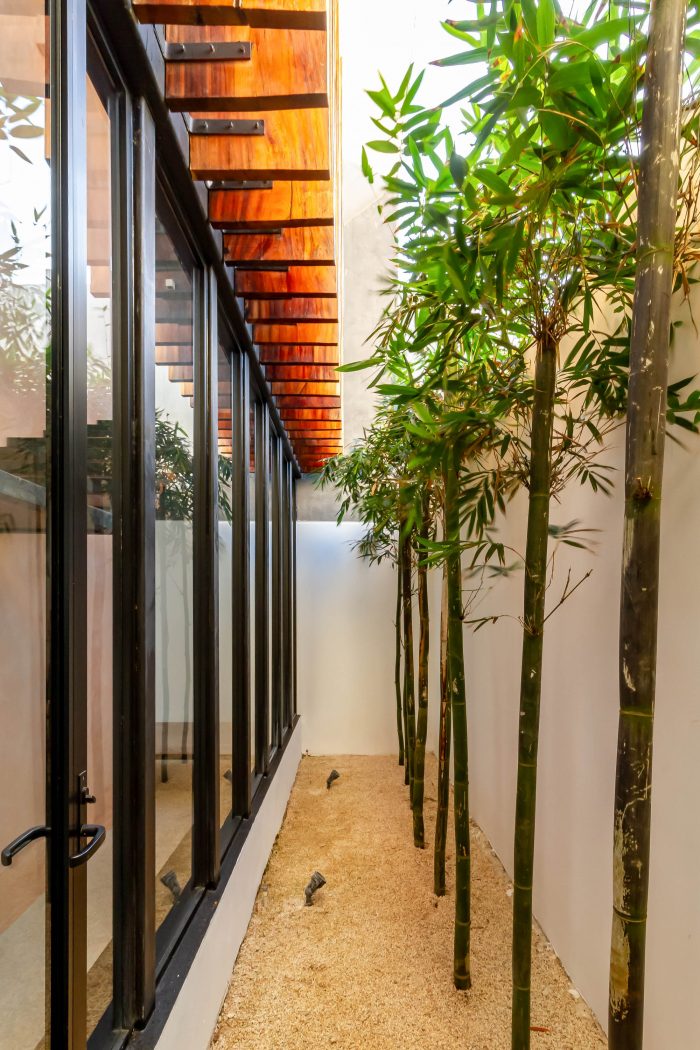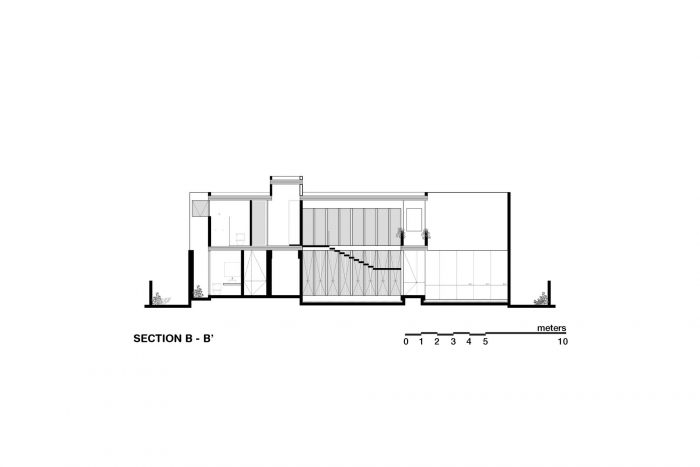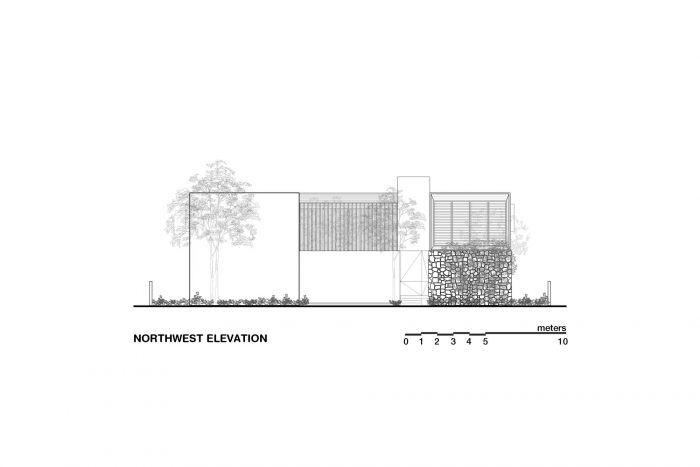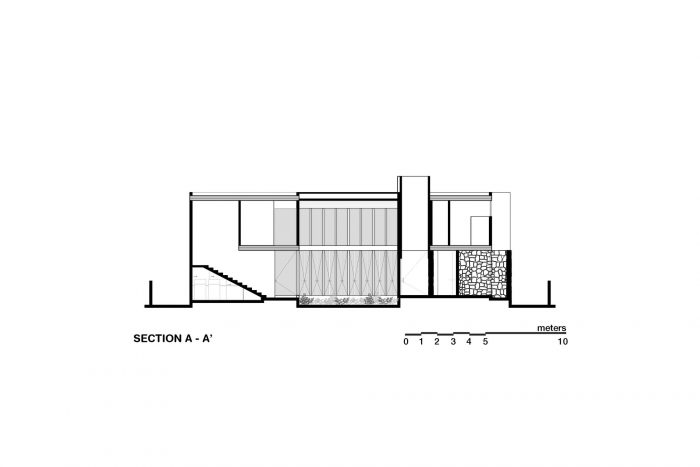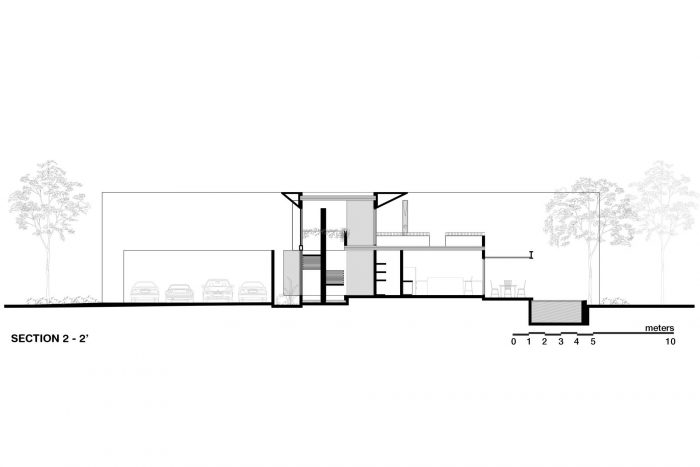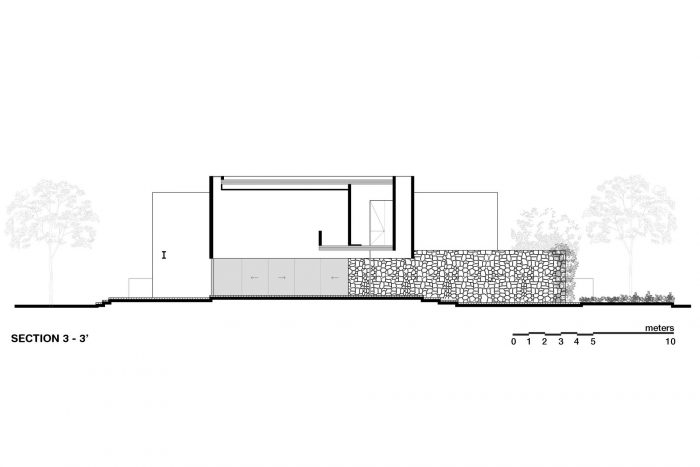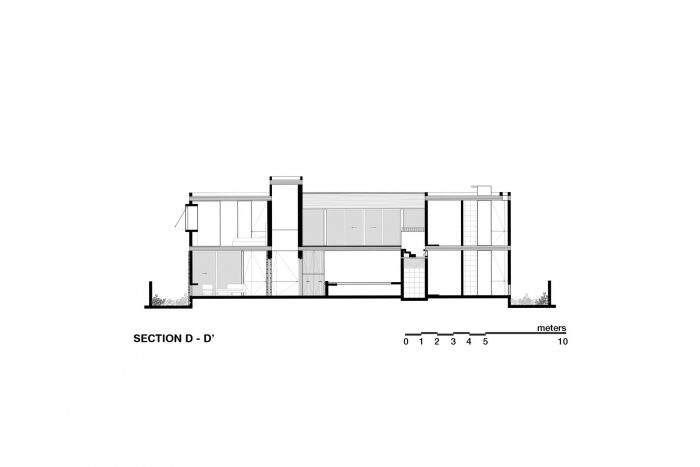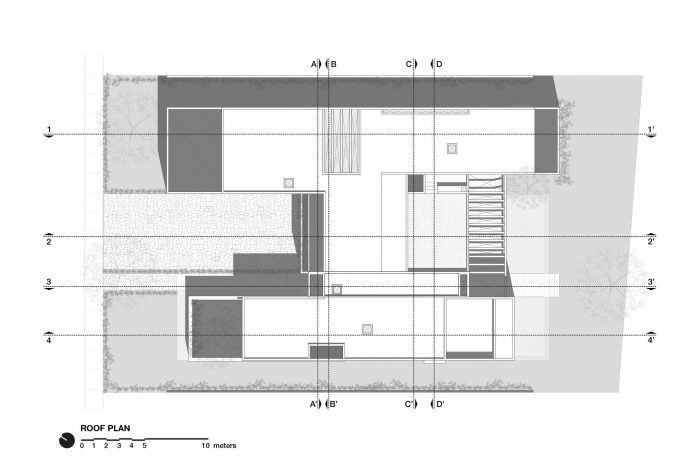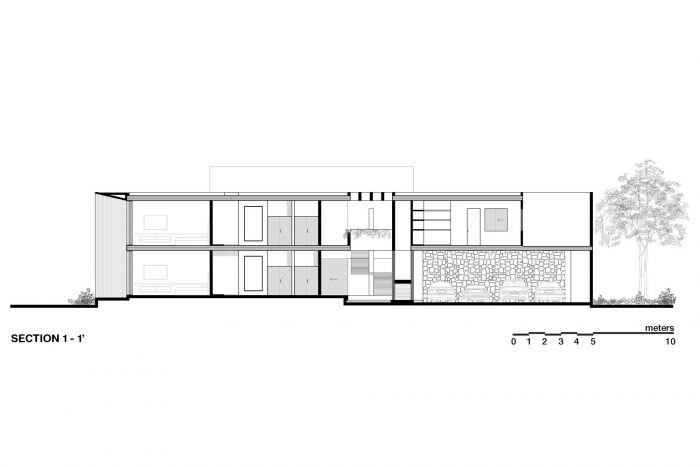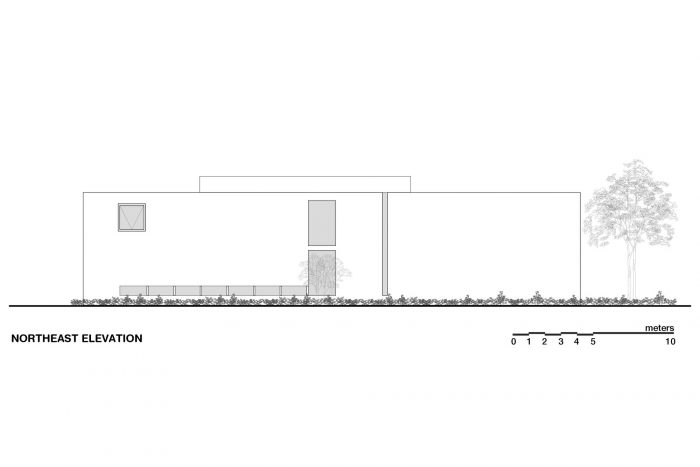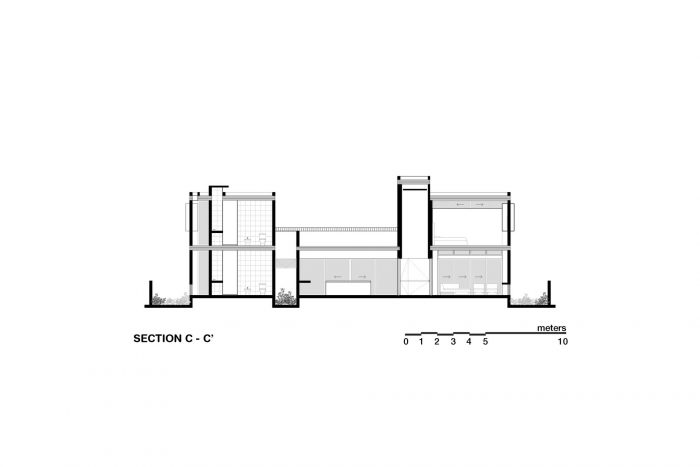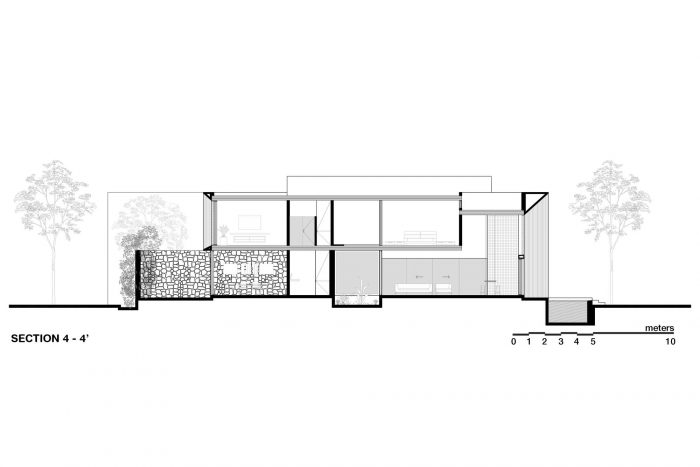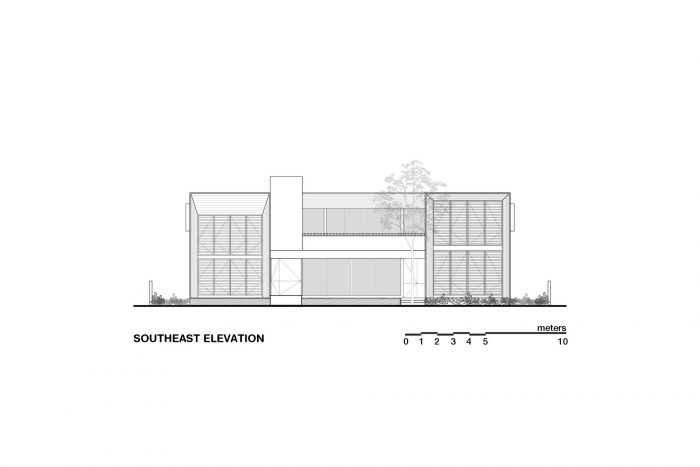冬之家是一个单一的住宅单元,其主要目标是成为一个庇护所和享受土地财产的原始特权性质的环境,如户外和乡村生活方式。这些都是蓝图被组织成四个区块的主要原因,通过居住者对住宅从内到外的渗透性的控制而联系起来,由于在体积、裂缝和跨度上完成的纹理,布局接近于动态过滤器,为了必要而扩大或限制空间。
Winter House is a single residential unit whose main goal is being a shelter and a setting for the enjoyment of the land property’s pristine privileged nature, such as the outdoors and the country lifestyle. These are the main reasons why the blueprint is organized into four blocks, linked through the occupants’ control of permeability from the inside-out of the residence, for the layout to approach thanks to the textures accomplished on the volumes, rifts, and spans, into dynamic filters which extent or restrict spaces in order to the necessities.
朝着大道的方向,出现了一种材料的语言,持有自然元素的诚意,如石头和木材,其跨度强调了不同的体量,似乎是一个挨着一个跳舞。空间被一条不同高度的轴线抓住,打开了一个从北到南的通道,房子的脊柱展开了每个空间,伸向乡村俱乐部的绿洲。
Towards the avenue arises a language of materials that holds the sincerity of the natural elements, such as stone and wood, and whose spans emphasize the different volumes that appear to be dancing one next to the other. Space is seized by an axis of different heights that opens a gateway from north to south as the spinal column of the house unfolds each space reaching into the green oasis of the Country Club.
朝着高尔夫营地,出现了一个不同体量的游戏,其外扩的跨度减少了重量,创造了覆盖着纹理的游戏,允许广泛的管理渗透性,如果愿意的话,有机会将整个房子变成高尔夫营地的延伸。该项目包括一个社交区域:客厅和餐厅、酒吧、办公室、厨房、游泳池和露台;一个私人区域,包括四个卧室和服务。要求这些区域是相互独立的,因此,通道被引入作为它们之间的交汇点,其功能是整个区域的延伸,通往高尔夫营地。
Towards the golf camp, a game of different volumes makes appears, whose flared spans reduce the weight, creating ones covered with textures that allow a wide managing of permeability, giving the opportunity to transform the whole house into an extension to the golf camp if wanted. The brief consists of a social area: the living and the dining rooms, the bar, the office, the kitchen, the pool, and the terrace; a private area, which includes four bedrooms and services. It was required that those areas were independent of one another, therefore, the access is introduced as a meeting point between them, and its function as an extension of the whole areas leading to the golf camp.
每个空间都因其隐私控制和对外部的渗透性而与众不同,如办公室被分为两个部分:一个在室外,一个在室内,它们的互动被认为是相互依赖的,因为树叶和住宅的构造允许(如果愿意)摆脱它们之间的分割,促进持续的通风和控制阳光。纹理管理响应了这个地方的渗透性,采石场的体量包围着露台,墙壁上有喷砂的混凝土饰面,木材和玻璃膜作为多功能的控制元素。
Every space is distinguished by its privacy control and permeability towards the exterior, as such as the office that is divided into two parts: one on the outdoors and one on the indoors, and their interaction is perceived as dependents one from another since the foliage and the tectonic of the residence allow (if wanted) to get rid of the splitting between them, promoting constant ventilation and controlled sunlight. Texture management responds to the location’s permeability, quarry stone on the volumes enclosing terraces, walls with sandblasted concrete finishes, and wood and glass membranes as versatile control elements.
Architects: LAAR
Area: 848 m²
Year: 2018
Photographs: Aaron Morales, Tamara Uribe, Diego Lizama
Manufacturers: Cemex, Carpintec, Coberma, Procon
Lead Architect: Andrea Cecilia Alcocer Carrillo, Diego Andrés Lizama Azcorra, Manuel Trujillo Ojeda
Engineering:Carlos Fernando Cárdenas Pinelo
Country: Mexico

